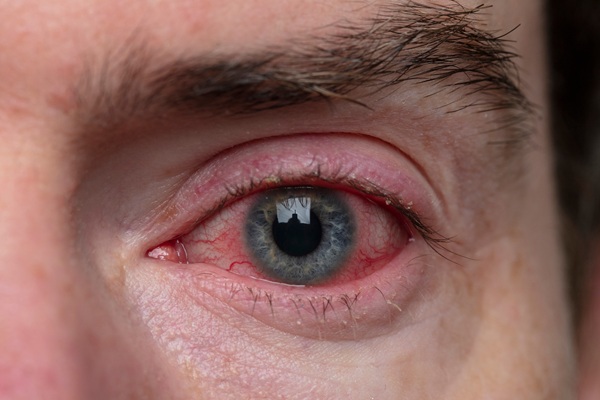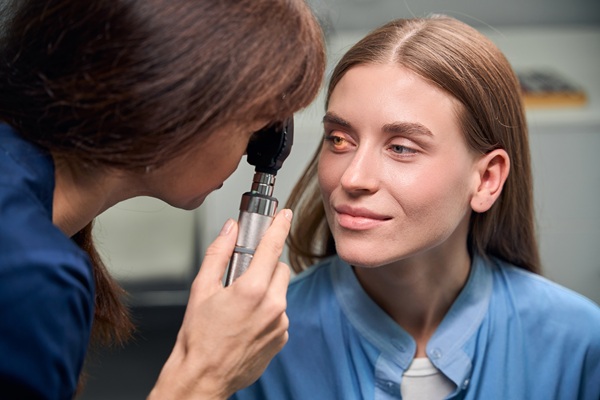When To Seek Professional Red Eye Treatment: Signs You Should Not Ignore

Red, irritated eyes can result from something as simple as fatigue or dryness. However, persistent or severe symptoms may indicate a more serious condition requiring red eye treatment from an optometrist. Understanding when those everyday symptoms become something more serious is key to protecting long-term vision and avoiding complications. Catching the signs early on and knowing what treatments are available can make all the difference in getting the right care at the right time.
Understanding red eye
Red eye is a common condition that happens when the blood vessels on the surface of the eye become inflamed or dilated, causing the eye to appear pink or red. Though it is often linked to minor issues like allergies or dryness, it can also signify something more serious. In some cases, infections or injuries may be responsible for the irritation. (Note that redness might appear in one or both eyes and can come with discomfort, discharge, or vision changes.) Getting a proper diagnosis from an optometrist is the best way to determine the cause and begin the right red eye treatment.
Common signs to seek professional red eye treatment
Red eyes now and then are usually nothing to worry about and often clear up with a little rest or basic over-the-counter care. However, several signs may indicate the need for professional red eye treatment. Some signs not to ignore include:
Eye pain or tenderness
Discomfort, aching, or tenderness in or around the eye is a significant warning sign people should not overlook. While minor irritation from environmental factors might cause temporary discomfort, ongoing pain may indicate conditions such as uveitis, glaucoma, or corneal abrasions. These issues often require prescription medications or other targeted red eye treatment options only an optometrist can provide.
Increased sensitivity to light
Increased sensitivity to light is another symptom that often accompanies more serious eye conditions. If everyday light from lamps, sunlight, or screens suddenly feels too bright or uncomfortable, it could result from inflammation or an infection like keratitis. Even simple tasks can feel difficult when this sensitivity shows up alongside red eye. An optometrist can help determine whether it is a surface irritation or a more serious issue that needs targeted red eye treatment.
Blurred vision
Red eye accompanied by changes in vision, such as blurriness, reduced clarity, or difficulty focusing, may indicate deeper issues affecting the eye's internal structures. Conditions like conjunctivitis, corneal infections, or acute angle-closure glaucoma can cause redness and visual disturbances. In such cases, prompt red eye treatment can prevent vision loss or complications. Even temporary changes in vision should not be ignored when coupled with red eye.
Swelling of or around the eye
Swelling of the eyelid, surrounding tissue, or even the eyeball itself can be a sign of infection, trauma, or inflammation. When swelling accompanies redness, it may point to conditions such as cellulitis or a blocked tear duct, both of which require prescription treatment. Swelling can also get in the way of normal blinking and tear production, worsening discomfort. Professional red eye treatment in these cases can relieve symptoms and address the root cause effectively.
It has been more than a week since symptoms started
When red eye symptoms do not improve or resolve within seven days, a more thorough examination is often necessary. Prolonged redness, irritation, or discharge could suggest a lingering infection, chronic inflammation, or another issue that needs targeted care. Extended symptoms may also indicate that an initial at-home treatment was ineffective or inappropriate for the underlying problem. An optometrist can provide a comprehensive assessment and implement a red eye treatment plan tailored to the patient's unique needs.
Types of professional red eye treatment
Red eye treatment from an optometrist depends on the cause of the symptoms. Antibiotic drops often treat bacterial infections, while allergies may respond to antihistamines or steroids. Viral cases, like conjunctivitis, usually need supportive care and symptom management. More serious conditions, such as uveitis or glaucoma, might call for stronger medications or surgery. Follow-up care is often part of tracking progress and making any needed changes, helping protect long-term eye health.
Contact an optometrist today
Persistent red eye symptoms should not be ignored, especially when accompanied by pain, vision changes, or swelling. Timely diagnosis and professional red eye treatment from an optometrist can resolve symptoms, prevent complications, and restore visual comfort. Whether symptoms have just begun or have lingered for several days, the Texas Optical is here to help. Contact our Dallas office today to learn more or to schedule an appointment.
Request an appointment here: https://www.texasoptical.net or call Texas Optical at (214) 771-7333 for an appointment in our Dallas office.
Check out what others are saying about our services on Yelp: Read our Yelp reviews.
Recent Posts
Red, itchy eyes can affect your everyday comfort and reduce overall well-being. It is important to seek effective vision care from the first sign of irritation. Proper attention to symptoms, underlying causes, and healthy habits ensures stronger long-term eye health and greater day-to-day clarity. Redness and itchiness often stem from several common triggers. These include: Allergic…
New spots or shadows drifting across vision can be unsettling, and sudden changes sometimes require emergency eye care to protect long-term sight. Many floaters are harmless, but others signal serious problems with the retina or internal eye structures. Understanding when floaters are normal and when they point to a true eye emergency helps patients act…
Glaucoma treatment plays a vital role in preserving vision and protecting the optic nerve from further damage. Many patients rely on daily eye drops to manage intraocular pressure, but these medications can sometimes come with side effects. Understanding how to recognize, minimize, and communicate about these effects supports long-term success and comfort with treatment. While…
Progressive lenses offer clear vision at near, arm's length, and far distances without the visible lines found in bifocals. They provide a smooth change in power from top to bottom, which means the eyes can focus comfortably throughout the day. With the right fit and guidance from an optometrist, progressive lenses help reduce eye strain…


